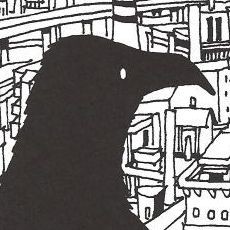It’s been a few years since I last enjoyed a Production I.G. TV series. The "mega-hit" Blood+ was a safe and predictable action series, while the elegant period setting of Le Chevalier D`Eon was dull and uninspired. All that is to say, I suppose I was expecting to be bored when watching Seirei no Moribito (a.k.a Guardian of the Sacred Spirit); it’s funny how wrong one’s expectations can be, and it’s subsequently great to be proven so profoundly wrong.
Based on the first of 10 fantasy novels by Shihoko Uehashi, Seirei no Moribito follows a precocious female warrior turned bodyguard called Balsa. The story so far is that it’s her job to protect the young Prince Chagum, a kind hearted member of the Royal family who has been "possessed by a water spirit" and since targeted for assassination by his own father (the Emperor). Amidst flames and confusion, Balsa flees the royal palace with Chagum in tow, hunted by the Emperor’s finest warriors.
Let’s get this obvious fact out of the way; Seirei no Moribito is a gorgeous example of high budget animation. With Production I.G., you expect lavish and detailed background art, but rarely do you see such objective, rural beauty in an anime TV series. Only Mushishi comes close to this obsessive reflection of nature. The art director is Yusuke Takeda, who was also behind both the stylised look Gankutsuou and the grandiose feel of Giant Robo. Takeda’s got talent.
It’s obvious that Seirei no Moribito is based on a novel, not only is the story deceptively straight forward and unconcerned with pointless details, the characterisation is striking and unique; the product of a seasoned and talented writer. Chagum isn’t the stuck up prince we expect him to be and Balsa isn’t a cold and efficient killer either, their personalities feel essentially human, different to what we expect.
It’s hard to write a review when you enjoy something so much, but stick with me; I’m not saying all this just to fill time. The director is Kenji Kamiyama, he of Stand Alone Complex fame. Indeed, Kamiyama is a steady and assured hand, never attempting to impose a distinct style on the narrative, preferring instead to let the story unfold at a natural pace.
No doubt, the soundtrack is my favourite of the spring season. It’s composed by the world famous Kenji Kawai, revered for his work on the Ghost in the Shell movies. Here his ethereal, emotional music bleeds into the animation, giving absolute life and emotion to the landscapes and wildlife that surrounds the characters. It’s particularly notable when Chagum scales a slippery, dangerous cliff. At the top, he finds a wolf; the background is filled with rain and lightning, the fearsome animal stands there starring at him, then just turns around and walks back down the cliff. The music during this moment is a heart stopping and tense epic; I need the soundtrack now!
I’ve saved the best for last; the action. I thought Tengen Toppa Gurren Lagann had some fluid hand to hand combat, but episode 3 of Seirei no Moribito rivals the famous "rain" episode from Samurai Champloo. The warrior costumes, their unconventional weapons (spears!) and the actual battle choreography is absolutely electric. There is no real "style" or posing to speak of; it’s real fighting, skirmishes that are often over within 10 seconds, but what a 10 seconds!
It’s hard to summarise a series I’ve enjoyed watching as much as the first three episodes of Seirei no Moribito. It’s already licensed by Geneon in the US, so expect a DVD release state-side soon enough, and the actual novels are going to be published too (in North America by Scholastic). Since Seirei no Moribito is simply the first book, I can only hope that this is the beginning of another big franchise for Production I.G.

Leave a Reply